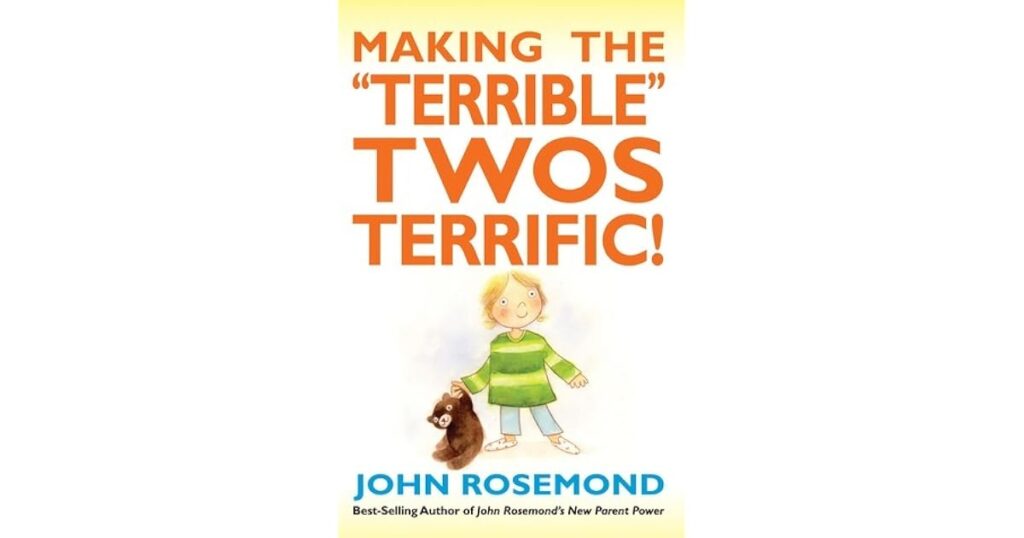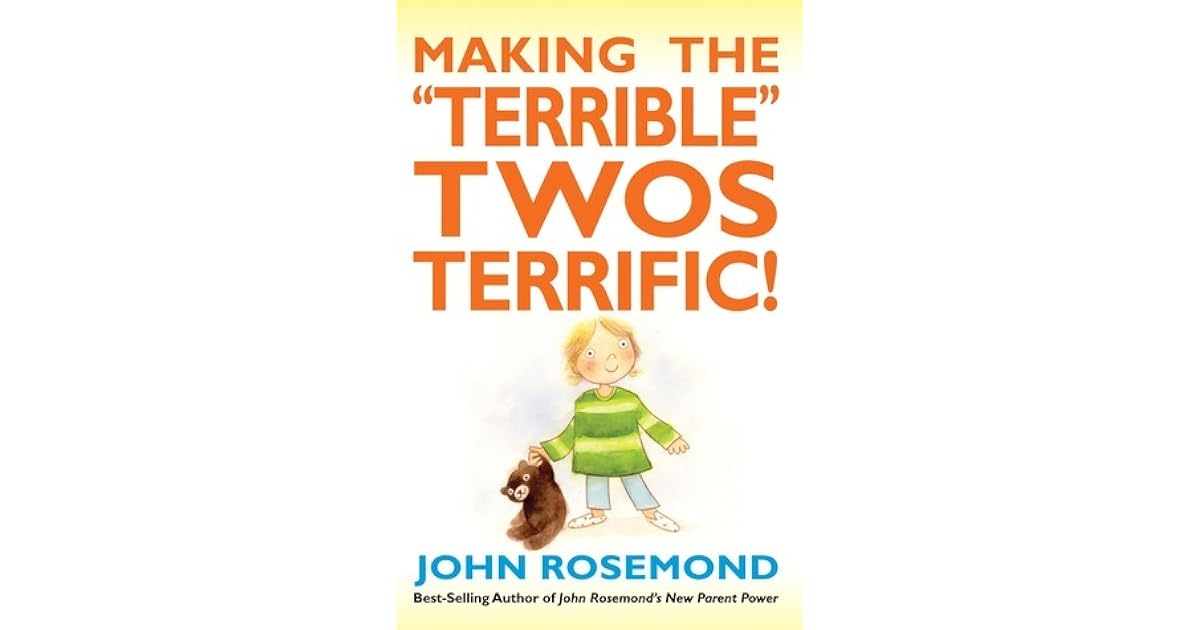
What Comes After the Terrible Twos: Navigating the Preschool Years
The “terrible twos.” Just the phrase can send shivers down the spines of parents everywhere. It’s a period often characterized by tantrums, defiance, and a seemingly endless stream of “no’s.” But what happens after the terrible twos? What comes next in the developmental journey of your child? The answer, thankfully, is a period of increasing independence, burgeoning social skills, and a gradual shift towards more cooperative behavior. Understanding what comes after the terrible twos is crucial for parents to effectively support their child’s growth and development during the preschool years.
Beyond the Tantrums: Understanding the Preschool Years (Ages 3-5)
The preschool years, generally spanning ages 3 to 5, are a time of significant cognitive, social, and emotional development. While occasional tantrums may still occur, children are generally more capable of expressing themselves verbally and understanding simple rules and expectations. This newfound ability opens up a world of possibilities for learning, exploration, and social interaction.
Cognitive Development
During this period, children’s cognitive abilities blossom. They become more adept at problem-solving, critical thinking, and understanding cause and effect. Their imagination runs wild, leading to elaborate pretend play scenarios. They also begin to grasp basic concepts such as numbers, letters, shapes, and colors. Parents can foster cognitive development by engaging children in activities that encourage exploration, experimentation, and questioning. Reading aloud, playing games, and providing opportunities for creative expression are all excellent ways to stimulate cognitive growth. Understanding what comes after the terrible twos includes supporting this cognitive leap.
Social and Emotional Development
The preschool years are also a time of significant social and emotional development. Children begin to develop a stronger sense of self and learn to navigate social interactions with peers. They learn about sharing, cooperation, and empathy. They also start to understand and manage their emotions more effectively. Parents can support social and emotional development by providing opportunities for children to interact with other children, teaching them how to resolve conflicts peacefully, and modeling positive social behaviors. It’s important to remember what comes after the terrible twos is not an immediate end to challenging behavior, but rather a gradual improvement in emotional regulation.
Language Development
Language skills continue to expand rapidly during the preschool years. Children’s vocabularies grow exponentially, and they become more proficient at expressing themselves verbally. They also begin to understand more complex grammar and sentence structures. Parents can support language development by engaging children in conversations, reading aloud, and encouraging them to tell stories. Asking open-ended questions and providing opportunities for children to practice their language skills are also beneficial. Knowing what comes after the terrible twos also means understanding the importance of continued language enrichment.
Common Challenges and How to Address Them
While the preschool years are generally a time of positive growth and development, parents may still encounter certain challenges. Understanding these challenges and having strategies to address them can help navigate this period more smoothly.
Continued Tantrums and Emotional Outbursts
Although less frequent than during the terrible twos, tantrums and emotional outbursts may still occur in the preschool years. These outbursts are often triggered by frustration, fatigue, or a feeling of being overwhelmed. When a tantrum occurs, it’s important to remain calm and avoid engaging in a power struggle. Instead, acknowledge the child’s feelings and provide a safe space for them to calm down. Once the child is calmer, you can talk about what happened and help them find a more constructive way to express their emotions. Remember, what comes after the terrible twos isn’t a complete absence of challenging behavior, but a decrease in frequency and intensity.
Difficulty Sharing and Cooperating
Sharing and cooperation can be challenging for preschoolers, as they are still developing their understanding of social norms and empathy. To encourage sharing and cooperation, provide opportunities for children to practice these skills in a supportive environment. Play games that require cooperation, such as building a tower together or working on a puzzle. Praise children when they share or cooperate, and model these behaviors yourself. Reading books about sharing and cooperation can also be helpful. What comes after the terrible twos often involves explicitly teaching social skills.
Separation Anxiety
Separation anxiety, or the fear of being separated from a parent or caregiver, is common in young children. To ease separation anxiety, establish a consistent routine for drop-offs and goodbyes. Provide the child with a comfort object, such as a favorite stuffed animal or blanket. Reassure the child that you will return and avoid lingering, as this can actually increase anxiety. Talk to the child about what they will be doing while you are gone and focus on the positive aspects of their day. Understanding what comes after the terrible twos includes recognizing and addressing potential anxieties.
Sleep Problems
Sleep problems, such as difficulty falling asleep or staying asleep, can also occur in the preschool years. To promote healthy sleep habits, establish a consistent bedtime routine. This routine might include a bath, reading a story, and singing a lullaby. Create a relaxing sleep environment that is dark, quiet, and cool. Avoid screen time before bed, as this can interfere with sleep. Ensuring sufficient physical activity during the day can also help children sleep better at night. Knowing what comes after the terrible twos also means ensuring adequate rest for continued development.
Strategies for Positive Parenting
Positive parenting techniques can be particularly effective during the preschool years. These techniques focus on building a strong relationship with your child, setting clear expectations, and using positive reinforcement to encourage desired behaviors.
Positive Reinforcement
Positive reinforcement involves rewarding desired behaviors with praise, attention, or small privileges. This encourages children to repeat those behaviors in the future. For example, you might praise a child for sharing their toys or completing a task independently. Avoid using punishment, as this can be harmful to a child’s self-esteem and can damage the parent-child relationship. Understanding what comes after the terrible twos means focusing on positive interactions.
Setting Clear Expectations
Children thrive on structure and predictability. Setting clear expectations helps them understand what is expected of them and reduces confusion and frustration. When setting expectations, be specific and age-appropriate. Explain the reasons behind the rules and involve children in the process of creating them. For example, you might explain that they need to hold your hand when crossing the street to stay safe. What comes after the terrible twos involves establishing clear boundaries.
Active Listening
Active listening involves paying attention to what your child is saying, both verbally and nonverbally. It also involves reflecting back their feelings and showing empathy. When your child is upset, try to understand their perspective and validate their emotions. For example, you might say, “I can see that you’re feeling frustrated because you can’t reach the toy.” Active listening helps children feel understood and supported. Knowing what comes after the terrible twos also means fostering open communication.
Spending Quality Time
Spending quality time with your child is essential for building a strong and loving relationship. This doesn’t have to involve elaborate activities; simply being present and engaged with your child can make a big difference. Read books together, play games, go for walks, or simply talk about your day. Make an effort to put away distractions and focus on your child. What comes after the terrible twos includes nurturing the parent-child bond.
Preparing for Kindergarten
The preschool years are a crucial time for preparing children for kindergarten. By focusing on developing their cognitive, social, emotional, and language skills, you can help them enter kindergarten with confidence and enthusiasm.
Academic Skills
While formal academics are not the primary focus of preschool, there are several academic skills that can be developed during this time. These include recognizing letters and numbers, understanding basic shapes and colors, and developing pre-writing skills. Engaging children in activities that promote these skills, such as reading aloud, playing with puzzles, and drawing, can help them prepare for kindergarten. Understanding what comes after the terrible twos also includes preparing for future academic success.
Social Skills
Social skills are essential for success in kindergarten. Children need to be able to interact with peers, follow directions, and cooperate in group activities. Providing opportunities for children to practice these skills in a supportive environment, such as playdates and preschool, can help them prepare for kindergarten. What comes after the terrible twos means building strong social foundations.
Emotional Skills
Emotional skills, such as self-regulation and empathy, are also important for success in kindergarten. Children need to be able to manage their emotions, cope with frustration, and understand the feelings of others. Parents can support emotional development by teaching children how to identify and express their emotions, modeling positive coping strategies, and providing opportunities for them to practice empathy. Knowing what comes after the terrible twos also means fostering emotional intelligence.
Conclusion: Embracing the Journey After the Terrible Twos
The preschool years are a time of remarkable growth and development for children. While challenges may arise, understanding what comes after the terrible twos and implementing positive parenting strategies can help navigate this period with confidence and joy. By focusing on fostering cognitive, social, emotional, and language development, you can help your child thrive during these formative years and prepare them for a successful future. Remember that every child develops at their own pace, and the most important thing is to provide a loving and supportive environment where they can explore, learn, and grow. What comes after the terrible twos is a journey of discovery, both for the child and the parent.

